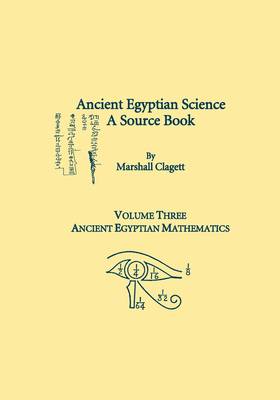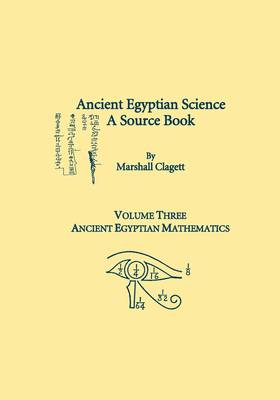
- Afhalen na 1 uur in een winkel met voorraad
- Gratis thuislevering in België vanaf € 30
- Ruim aanbod met 7 miljoen producten
- Afhalen na 1 uur in een winkel met voorraad
- Gratis thuislevering in België vanaf € 30
- Ruim aanbod met 7 miljoen producten
Zoeken
Ancient Egyptian Science, Vol. III
A Source Book, Ancient Egyptian Mathematics, Memoirs, American Philosophical Society (Vol. 232)
Marshall Clagett
€ 199,45
+ 398 punten
Omschrijving
This volume continues Marshall Clagett's studies of the various aspects of the science of Ancient Egypt. The volume gives a discourse on the nature and accomplishments of Egyptian mathematics and also informs the reader as to how our knowledge of Egyptian mathematics has grown since the publication of the Rhind Mathematical Papyrus toward the end of the 19th century. The author quotes and discusses interpretations of such authors as Eisenlohr, Griffith, Hultsch, Peet, Struce, Neugebauer, Chace, Glanville, van der Waerden, Bruins, Gillings, and others. He also also considers studies of more recent authors such as Couchoud, Caveing, and Guillemot.
Specificaties
Betrokkenen
- Auteur(s):
- Uitgeverij:
Inhoud
- Aantal bladzijden:
- 863
- Taal:
- Engels
- Reeks:
Eigenschappen
- Productcode (EAN):
- 9780871692320
- Verschijningsdatum:
- 1/01/1999
- Uitvoering:
- Paperback
- Formaat:
- Trade paperback (VS)
- Afmetingen:
- 178 mm x 254 mm
- Gewicht:
- 816 g

Alleen bij Standaard Boekhandel
+ 398 punten op je klantenkaart van Standaard Boekhandel
Beoordelingen
We publiceren alleen reviews die voldoen aan de voorwaarden voor reviews. Bekijk onze voorwaarden voor reviews.











